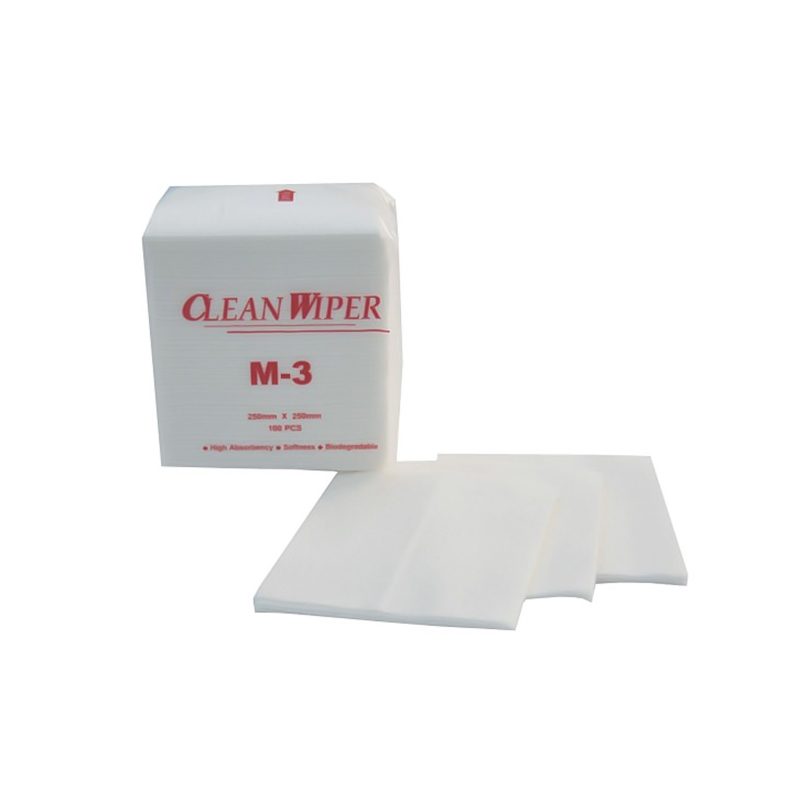In a cleanroom environment, the accumulation of static electricity is a hidden danger that cannot be ignored, especially during the cleaning process of electronic manufacturing, semiconductor processing and other high-precision equipment. Static electricity can not only affect the normal operation of the equipment, but may even cause equipment damage, product quality degradation or production interruption. Therefore, it is crucial to take effective static control measures when using Clean Swab to clean sensitive equipment. This article will explore how to effectively prevent static electricity accumulation during the cleaning process to ensure the safety and quality of equipment and products.
1. Choose Clean Swab with antistatic material
In a cleanroom, the material of Clean Swab directly affects the control effect of static electricity. Generally speaking, ordinary cotton swabs are prone to static electricity, while special antistatic Clean Swabs use materials with antistatic functions, such as conductive fibers or antistatic plastics. Using cotton swabs of this material can effectively reduce the accumulation of static electricity and prevent the occurrence of static electricity problems from the source. Therefore, when cleaning sensitive equipment, be sure to choose Clean Swabs that have been treated with antistatic.
2. Maintain humidity control in the cleanroom environment
One of the main causes of static electricity accumulation is dry air. In a dry environment, objects are more likely to generate static electricity. Therefore, maintaining proper humidity in the clean room (usually between 40% and 60%) helps reduce the generation of static electricity. When the humidity is too low, the humidity level can be controlled by humidifying equipment or adjusting air circulation to reduce the risk of static electricity accumulation. During the cleaning process, using anti-static Clean Swab and humidity control can effectively avoid static electricity problems.
3. Equipped with anti-static tools and equipment
When cleaning sensitive equipment, in addition to using anti-static Clean Swab, other anti-static tools can also be used to reduce static interference. For example, grounded cleaning pads, grounding belts or static eliminators can be used to help release static electricity. Cleaners should wear anti-static gloves during the cleaning process to prevent static electricity from being transferred to the equipment through the body. In addition, keeping the equipment and workbench well grounded is also an effective measure to prevent static electricity accumulation.
4. Use static eliminators
Static eliminators are chemical products that can quickly eliminate static electricity, usually in the form of sprays. Cleaners can spray an appropriate amount of static eliminators on the surface of the equipment before using Clean Swab to clean the equipment. These eliminators can effectively neutralize the static electricity accumulated on the surface of the equipment and reduce the harm of static electricity to the equipment. However, when using static eliminators, it is necessary to ensure that they do not cause damage to equipment or sensitive parts. Therefore, it is crucial to choose static eliminators that meet industry standards.
5. Correct operating procedures
Static control does not only rely on tools and equipment, but correct operating procedures are equally important. During the cleaning process, operators should try to avoid rubbing the surface of the equipment with force to avoid generating static electricity through friction. Cleaners should also avoid wearing clothing that is prone to generating static electricity, and it is recommended to wear anti-static clothing. When using Clean Swab, the surface of the equipment should be wiped gently to avoid excessive friction that causes static electricity. At the same time, cleaners should maintain contact with the ground during work and keep their bodies grounded.
6. Regularly check and maintain equipment
In order to ensure the effectiveness of static control measures, the status of anti-static equipment and Clean Swab in the clean room should be checked regularly. For example, an electrostatic tester can be used regularly to check the static electricity level in the work area to ensure that it is within a safe range. At the same time, the anti-static function of the cleaning tool should be checked to ensure that the Clean Swab can achieve the expected anti-static effect before each use. Regular inspection and maintenance can detect potential static electricity problems in time to avoid affecting cleaning quality and equipment safety.
7. Training and Education
Static electricity control is not only a technical issue, but also the responsibility of operators. All cleaning staff must receive training on static electricity protection, understand the impact of static electricity on equipment and products, and master how to use anti-static Clean Swab and other static electricity protection measures. In addition, operators should receive updated static electricity control training regularly to ensure that they have a full understanding of the latest static electricity protection technology and best practices.

 中文简体
中文简体 English
English Español
Español русский
русский Deutsch
Deutsch Français
Français













